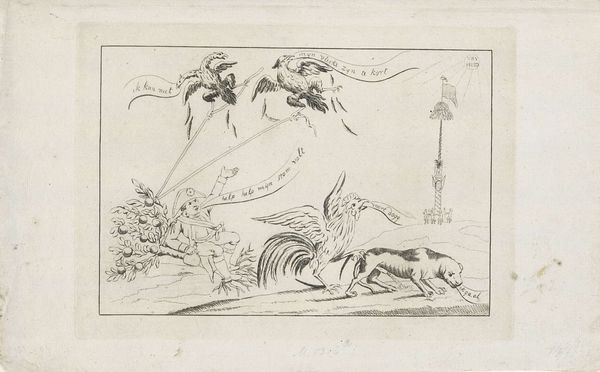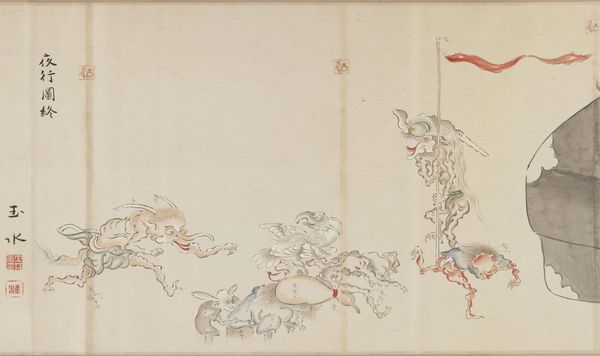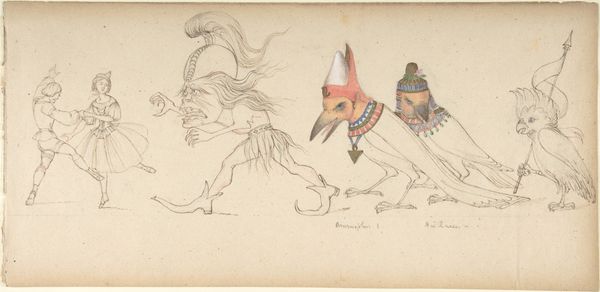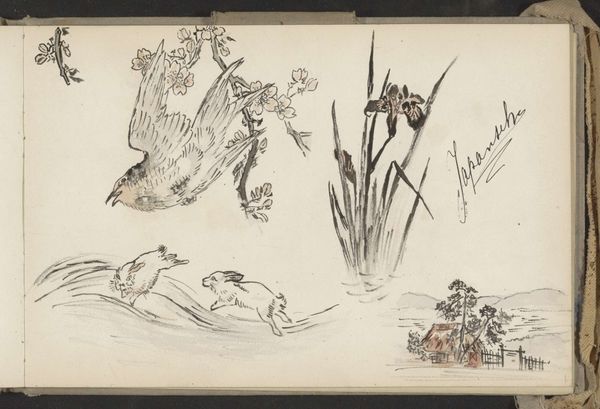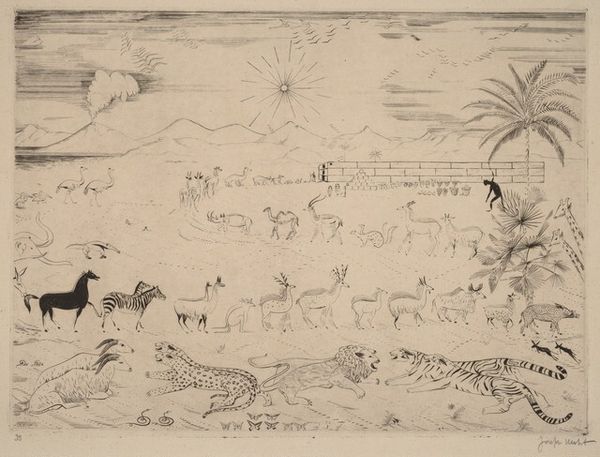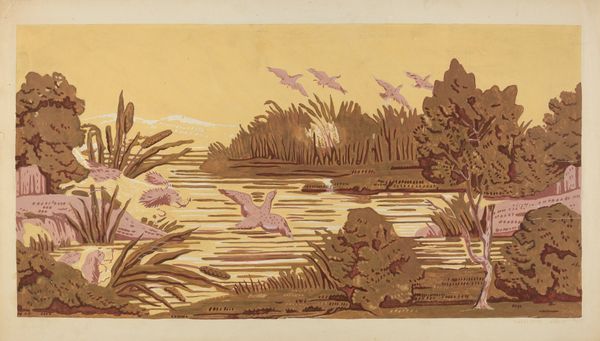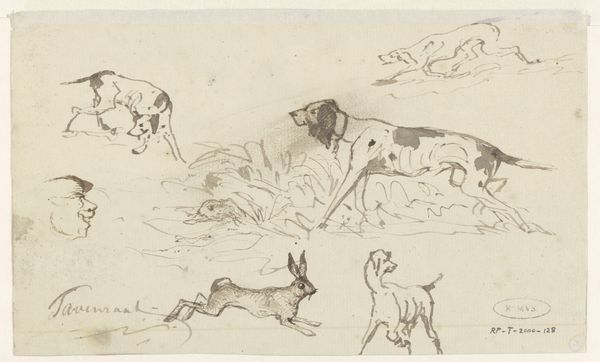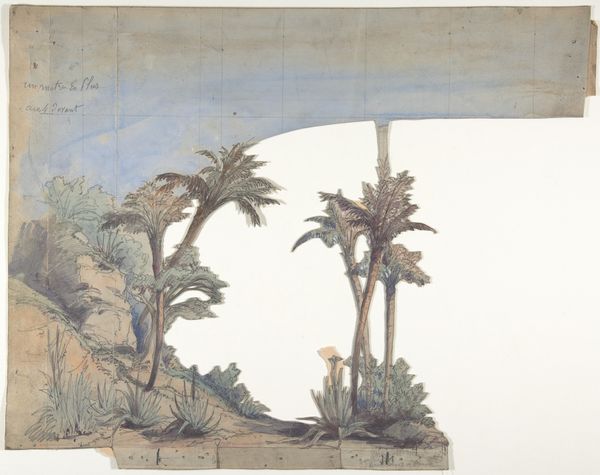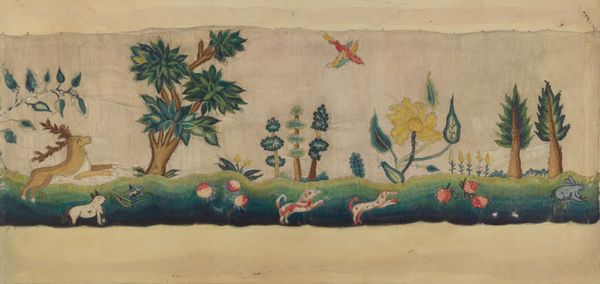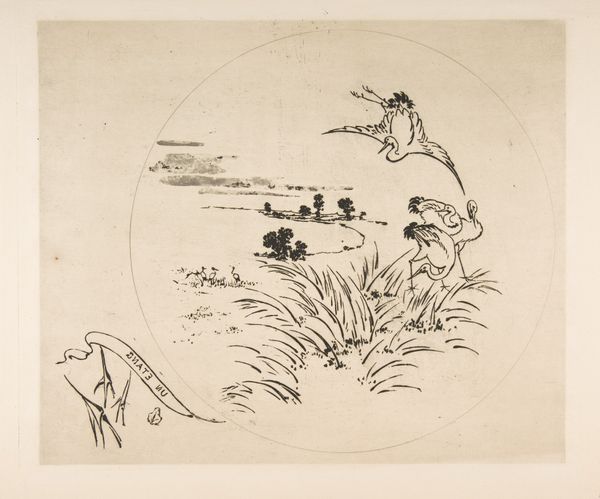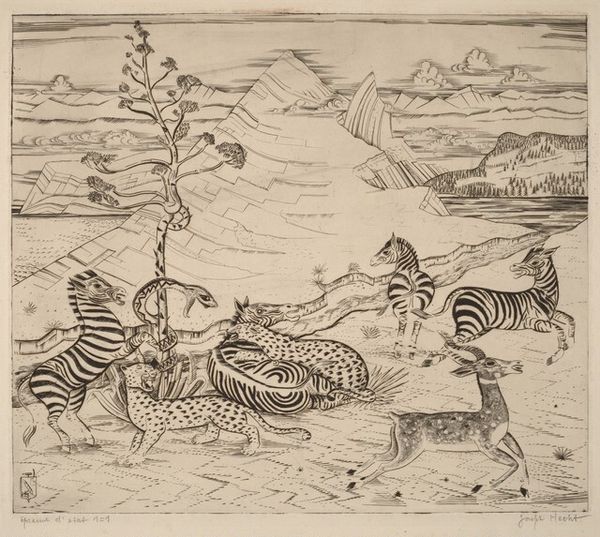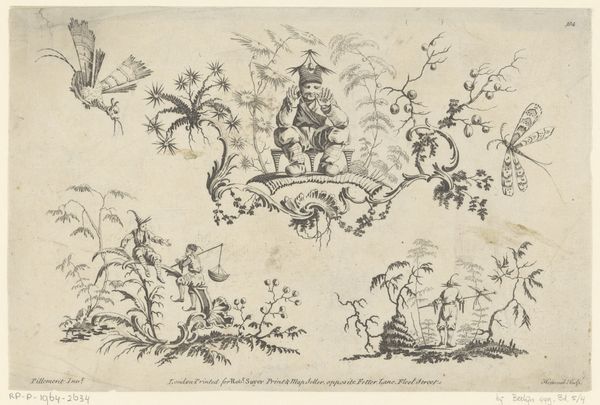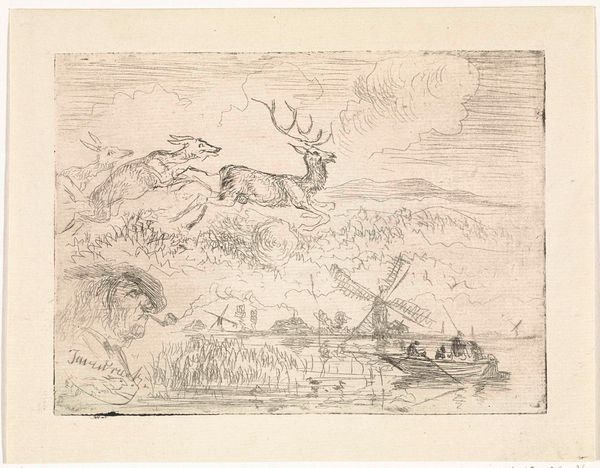
print, watercolor
#
narrative-art
# print
#
caricature
#
watercolor
#
romanticism
#
watercolour illustration
#
history-painting
#
watercolor
Dimensions: height 175 mm, width 242 mm
Copyright: Rijks Museum: Open Domain
Curator: I'm immediately drawn to the whimsical nature of this watercolor illustration. It's titled "Vallende Oranjeboom, 1795," or "Falling Orange Tree, 1795" and resides here at the Rijksmuseum. Editor: My first impression is that the composition feels intentionally disorganized, chaotic even, yet balanced in an unsettling manner. The pastel shades contribute to a feeling of political upheaval portrayed with childlike whimsy, creating quite the discordance. Curator: The beauty of caricature, isn't it? This was created anonymously during a time of great political change in the Netherlands. You have the falling orange tree symbolizing the House of Orange losing power. The surrounding animals... they are heavy with symbolism. Editor: The skeletal eagles presiding at the top look menacing despite the cartoonish line work. The flat application of color feels rather unrefined, a clear deviation from any kind of classical rendering. Curator: Look closer. Those eagles perched at the top, they are representative of foreign powers meddling in Dutch affairs at the time. And that rooster confronting the prowling dog? That's France challenging the Dutch Republic. It’s almost like reading a visual fable, a story the people already understood deeply. Editor: Semiotically, it is potent. Every animal becomes a player on a global stage. What strikes me about the work as a whole is how such momentous political change can be distilled into such simple visual elements. It feels almost flippant in its approach. Curator: But that flippancy, it hides the anxiety and uncertainty of the era. It provided an accessible way for people to express their fears and aspirations during a volatile period. Visual symbols could speak louder than any written word, fostering a collective memory of this historic transition. Editor: I concur. There’s a directness to the language, even across centuries. The unrefined technique underscores its populist appeal, its accessibility as a symbolic representation. Its rough-hewn aesthetic enhances the work's urgency, echoing the fervor of revolution itself. Curator: Exactly! It’s a powerful snapshot of a pivotal moment, translated into a symbolic narrative easily understood. Editor: It reveals, once more, how art can become a profound medium through which political upheaval is captured, criticized, and then passed down, ensuring we never forget the symbolic language of power and dissent.
Comments
No comments
Be the first to comment and join the conversation on the ultimate creative platform.
